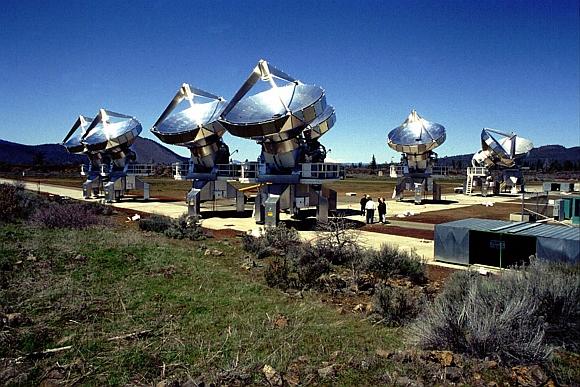No evidence of transmitting aliens was reported when search for Extraterrestrial Intelligence astronomers completed their first 'directed' search in an effort to search for intelligent extraterrestrials.
By focusing the Green Bank radio telescope, located in West Virginia, on stars hosting (candidate) exoplanets, it is hoped that one of those star systems may also play host to a sufficiently evolved alien race capable of transmitting radio signals into space.
But in a study headed by ex-SETI chief Jill Tarter, the conclusion of this first attempt is blunt: "No signals of extraterrestrial origin were found," Discovery News reported.
...
Scientists search 86 stars, but find NO aliens
Image: Space entrepreneurs beamed best wishes on July 4, 2003 to five sun-like stars, hoping intelligent beings would get the message. This specially-designed message uses a mathematical language to convey information about earth and humanity to any extraterrestrial that may intercept a cosmic callPhotographs: Reuters
With the help of the Kepler space telescope, Tarter and her team were able to identify which stars in Kepler's field of view host exoplanets with certain characteristics.
By selecting star systems hosting worlds in their habitable zones, systems containing 5 or more exoplanets and super-earths with an orbital period of over 50 days, the astronomers hope that the evolution of intelligent life may have been possible, and thus may contain a transmitting alien race.But it's a bit like trying to find a needle in a haystack, when you have no clue where the haystack is.
"In particular, we can offer no argument that an advanced, intelligent civilisation necessarily produces narrow-band radio emission, either intentional or otherwise," the SETI astronomers stated.
...
Scientists search 86 stars, but find NO aliens
Image: Dr Frank Drake, founder of SETI and the Drake equationPhotographs: Kimberly White/Reuters
"Thus we are probing only a potential subset of such civilisations, where the size of the subset is difficult to estimate. "The search for extraterrestrial intelligence is still in its infancy, and there is much parameter space left to explore," they said.
Eighty-six stars were selected for this directed search, and over a period of three months in 2011 (February to April), the Green Bank antennae detected 52 candidate narrow-band radio signals (less than 5 Hz) between 1-2 GHz.
After careful analysis, all signals were ruled out as being anything extraterrestrial; they were identified as interference from artificial terrestrial sources.




article